Although they are classified as gemstones, pearls are quite unique, especially since they are the only gem material made and found within a living thing. Unlike other valuable gems like diamonds, emeralds, rubies, among others, pearls do not need to be cut or polished before use.
The question that many people ask about pearls is: How much are pearls worth? This article discusses the true value of pearls.
How Much Are Pearls Worth?
Many factors determine the value of pearls, including the type, color, size, and surface quality. It is also important to mention that wild pearls are worth more than cultured pearls. But how much is a pearly worth? On average, a pearl’s worth falls somewhere between $300 and $1,500.
What Factors Affect the Value of Pearls
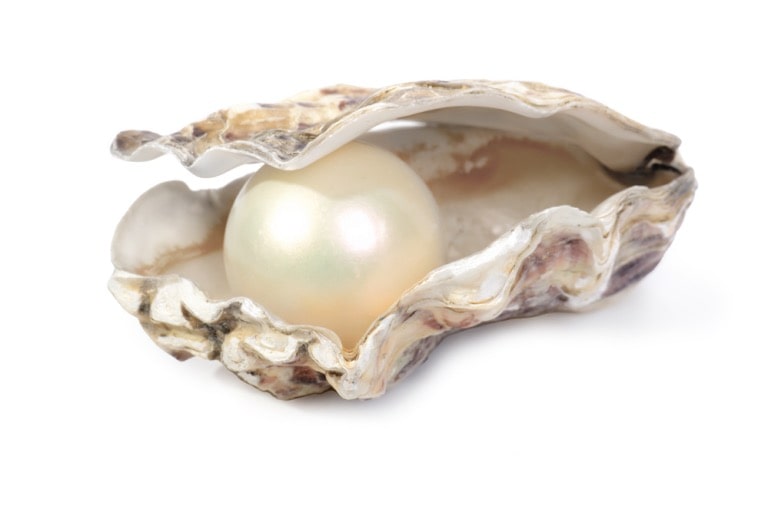
As mentioned above, the main factors that determine the real value of pearls are size, color, type, shape, surface quality, among others. It is important to be aware of these factors when you are buying or selling pearly jewelry.
- Size: Larger pearls are scarcer and more valuable than smaller pearls of the same type.
- Shape: Round pearls are very difficult to culture, and therefore they are more expensive than other shapes. But you can also expect to pay more for any other shape, especially oval or baroque, that is well-formed.
- Color: Both natural and cultured pearls are available in various attractive colors. The most common warm colors include yellow, pink, and orange, while the cool colors include green, blue, and violet. Pearl colors have three main components: body-color, overtone, and orient. The value of certain pearl colors is determined by the law of supply and demand.
- Luster: This is one of the most important factors that determine the real value of a piece of pearl. Pearls acquire their real beauty from luster. The shine can be excellent, very good, good, fair, and poor. The higher the luster, the more valuable the pearl is.
- Surface quality: Whether natural or cultured, most pearls do not achieve perfection. Some will have tiny scratches on their surfaces or compressed sections that don’t affect their basic shapes. But if the abrasions are severe, they will affect the pearl’s value.
- Nacre quality: Shine and nacre quality are almost related. If the pearl has a cloudy, pale appearance, it means that the nacre is thin.
- Matching: It is normal for jewelry designers to deliberately combine colors, shapes, and sizes for better effects. However, the most valuable pearl jewelry should match in every quality aspect.
5 Different Types of Pearls
When you think of pearls, the first picture that is likely to come to your mind is the classic, creamy, white, perfect sphere worn by top female celebrities. But this is just one among a wide range of pearls. In fact, different types of pearls vary greatly in size, color, form, and place of origin. Here are some of the main types of pearls.
1. Akoya Pearl
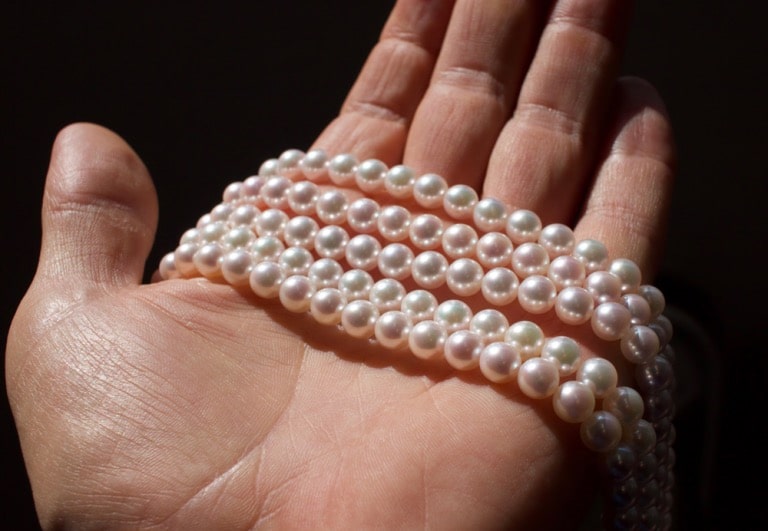
This is one of the most popular types of pearl. It is characterized by a luxurious white sheen, which is exclusive to it. Akoya pearl is famed for using the Pinctada fucata martensii saltwater oyster found in the icy coastal waters of Japan, Vietnam, and Southern China.
Japan has for a long time been a world leader in the farming of Akoya pearls, generating the most reliably high-quality samples in the world.
2. Freshwater Pearl
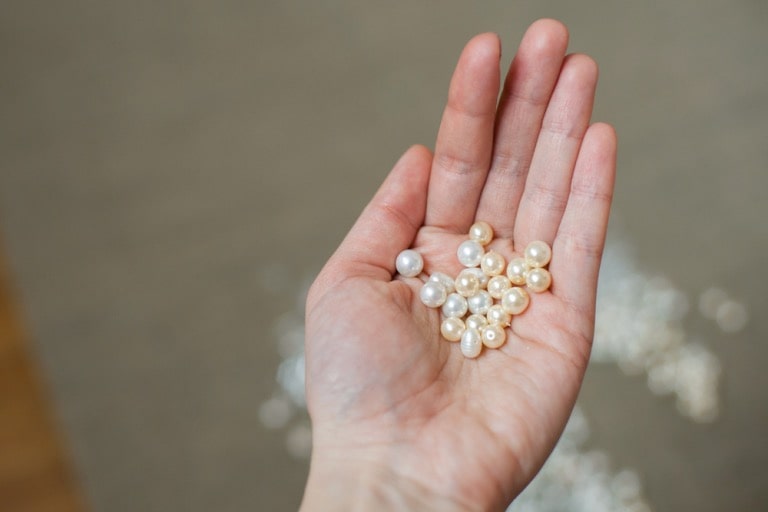
Much like its name suggests, this type of pearl grows inside freshwater mussels as opposed to ocean mollusks. These pearls are quite affordable and readily available on the market. However, their finer varieties can be quite costly. Freshwater pearls are mainly found in China and are available in a wide variety of colors, including peach, lavender, pink, and white.
They are also treated with special tints to improve or alter their coloring. Freshwater pearls colored black are referred to as “Peacock pearls” due to their sparkling violet iridescence. Freshwater pearls can vary in diameter from 2mm to 12mm, with some new variations growing up to 15mm.
3. Tahitian Pearl
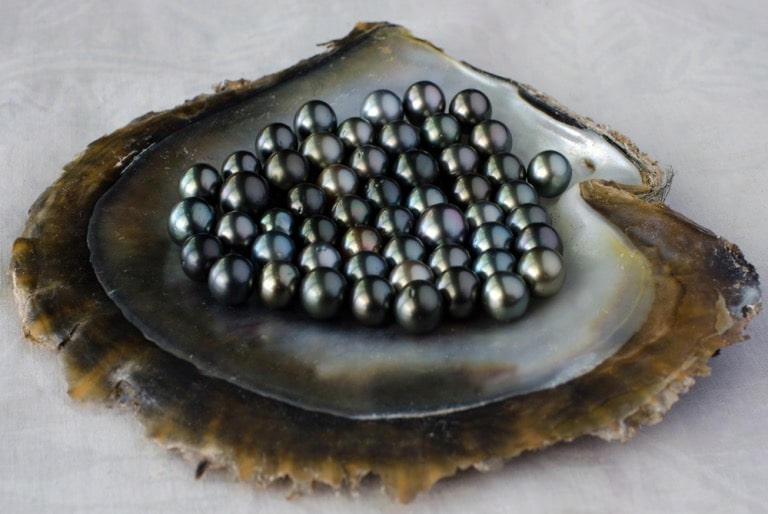
Tahitian pearls come from black-lipped oysters in the mild coastal waters of French Polynesia. They are the only “black pearls” that occur naturally. They normally feature a slick, metallic, grey coloring. It is also important to mention that darker Tahitian pearls are rarer than lighter ones, and so they are more expensive.
4. South Sea Pearl
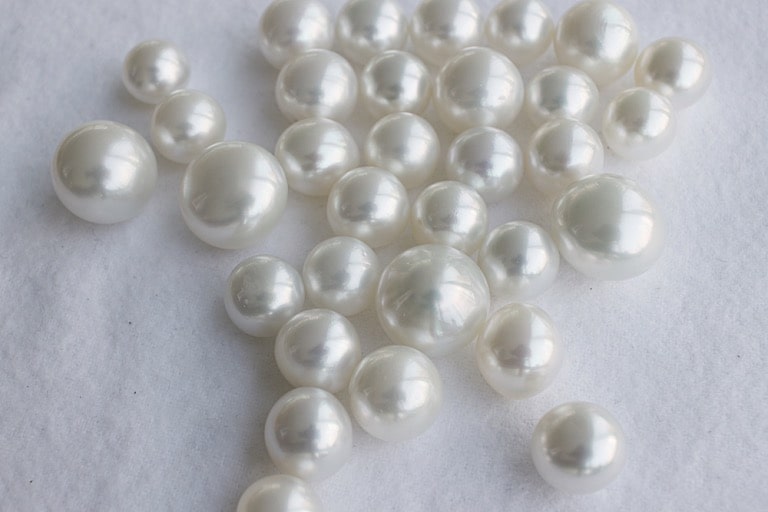
The South Sea pearl is one of the highly sought-after treasures and is typically the largest and classiest type of pearl. Their aura is based on the fact that they are grown in the notorious “coral triangle”. This area, which is notorious for ocean pirates and sharks lies between Australia, Indonesia, and the Philippines.
South Sea pearls vary in size from 8-20mm, with gems larger than 15mm costing tens of thousands of US dollars. A South Sea pearl can be silky white, sleek silver, pastel pink, or rich gold, depending on the type of oyster it forms in.
Large, well-rounded South Sea pearls are indisputably the most prized and treasured types of pearls on the market. That’s why some people are willing to go to radical lengths to get these pearls.
5. Baroque Pearl
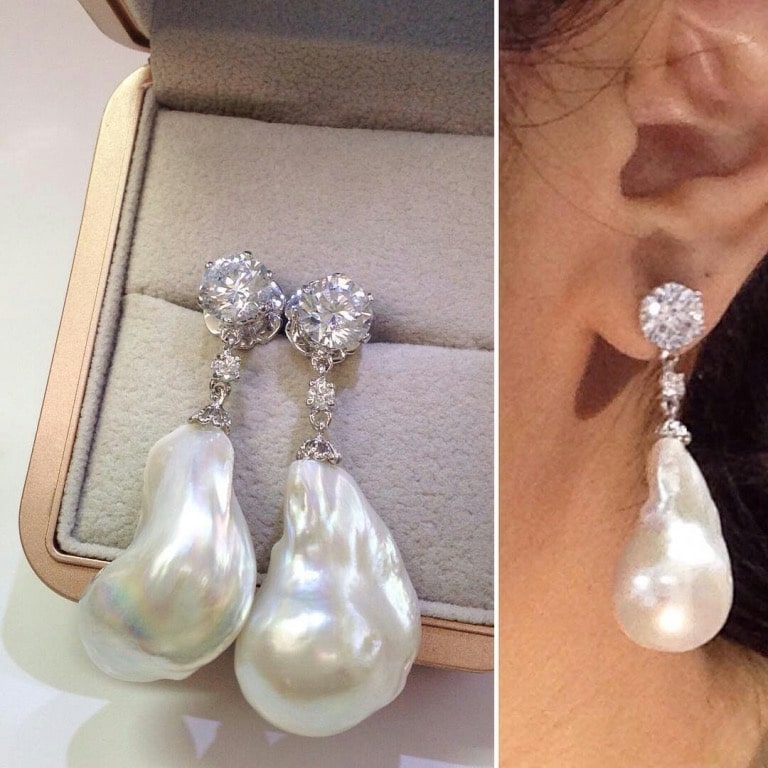
Image source: Pinterest
Baroque pearls are measured by many factors, the main one being their shape. There are two main categories of shapes that all pearls fall into: traditional and baroque. The difference between these two shapes is that traditional pearls are round, while baroque pearls are nearly anything else.
Some people prefer baroque pearls because of their unique shapes, but traditional pearls are normally the most valuable. The value of a traditional pearl depends on its size. So, the bigger it is, the more valuable. The real value of baroque pearls is based on color and shine.
Which Color of Pearl Is the Most Valuable?
The most valuable and affluent type of pearl on the market today is the South Sea pearl, which naturally occurs in white and gold colors. Whether it is the popular Akoya pearl, or stylish South Sea pearl, white pearls have been the most popular pearls for literally centuries. They have been worn and loved by both women and men, especially because of their subtle grace and adaptability.
On the other hand, dark and exotic black pearls have recently started to capture the interest of both men and women around the world, especially because they are a hundred times rarer than white pearls. Black pearls are normally infused with different types of mythical properties for better luster.
How Can You Tell if Pearls Are Real?
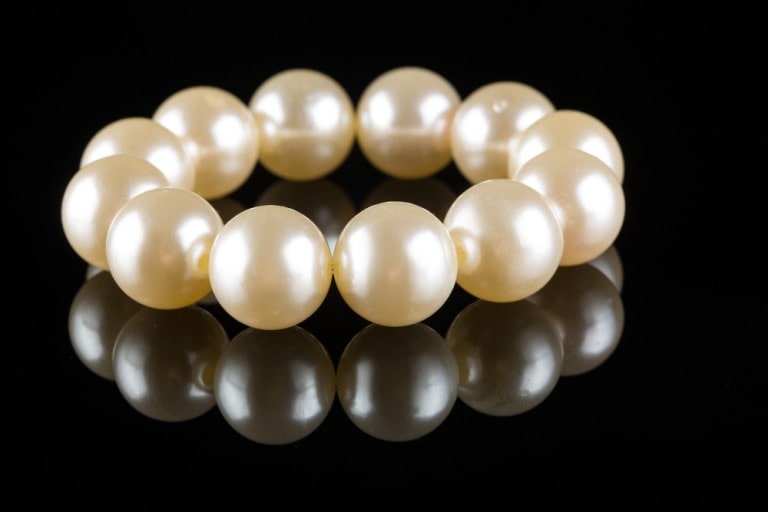
Are you planning to buy a piece of pearl jewelry but can’t tell the difference between real and fake pearls? If so, here are a few simple tests that you can use to check whether your pearl is fake or real in just a few minutes.
1. Visual Test
You can check the pearl for minor deficiencies. As mentioned above, real pearls are hardly perfect. They always have minor blemishes like scratches and irregularities in shape. Their outer nacre layer also reflects light differently.
Therefore, if your pearl seems flawless, it could be fake. An imitation pearl will always appear perfectly spherical. You should also check its overtone. Real pearls are often valued for their overtones. This is the refined color that becomes visible when light hits the outer surface of a pearl.
Additionally, real pearls almost always have clear outer nacre layers, while fake ones have thin layers of artificial nacre or lack them completely.
2. Touch Test
You can also know if a pearl is real or fake by rubbing it against the front of your teeth. Just hold the pearl between your fingers and press it gently into the sharp edge of your front teeth. Rub it against your teeth to feel the slightly rough edges or gritty texture. The rough texture is caused by the tiny imperfections in the outer layer of the nacre.
So, if your pearl doesn’t have these scale-like blemishes, it could be fake. Also, if you rub two pearls against each other, real pearls will generate slight friction since their outer layers of nacre are not flawlessly smooth. You can also tell the difference between a fake pearl and a real one by feeling the weight of the pearls in your hand.
Just bounce one or two pearls in your hand to feel their weight. Most real pearls feel quite heavy for their size.
3. Advanced Tests
You can check your pearl for a “scaly” surface modeling with a microscope. Alternatively, you should compare your pearl to a certified pearl. If none of these tests works, get your pearls evaluated by an expert.